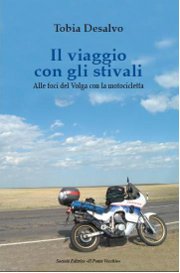Human Rights in Iran, the current situation
Iran (before 1935, Persia), officially the Islamic Republic of Iran, is a country in Western Asia. The 18th largest country in the world in terms of area, Iran has a population of over 70 million. Iran is home to one of the world's oldest continuous major civilizations. Also, the world's first declaration of human rights, the Cyrus the Great cylinder, is a document issued by the Persian ruler Cyrus the Great in 539 BC in the form of a clay cylinder inscribed in cuneiform script. During past centuries and before 1979 revolution in Iran, this country was ruled by different kingdom dynasties. In 1979 Iranian people overcame the autarchic regime of the last king of Iran but unfortunately the outcome was another autarchy which again withholds political freedom and even, due to its religious nature, human rights and civil freedom. In this article, we briefly refer to some aspects of human right violations by Iran's government over these three decades and especially after the latest presidential election on June 12, 2009.
At first, it is better to take a glance at Iran's political power structure. The political system of Iran, based on the 1979 constitution, comprises several intricately connected governing bodies. The highest state authority is the Supreme Leader. Ayatollah Khomeini was the first person who held this title. There has only been one other supreme leader, Ayatollah Ali Khamenei, who took power the day after Khomeini died and has been ruling ever since. The Supreme Leader has final control over all things in Iran: politics, judicial appointments, religion, media, military, foreign policy, and the presidency. The position is appointed by the Assembly of Experts, which ranks lower in the power structure.
The next highest body in Iranian politics is the Guardian Council. This body of 12 jurists decides which legislation is permissible under Islamic law and which candidates may run for president or parliament. Six members of the Guardian Council are directly appointed by the supreme leader, and the other six are recommended by the head of the judiciary — appointed by the supreme leader — and forwarded to parliament for certain approval. Under Iran's constitution, the supreme leader can appoint or dismiss Guardian Council jurists at will.
After the Guardian Council comes the Assembly of Experts. This is a panel of 86 Islamic scholars that is supposed to select and oversee the activities of the supreme leader. They are elected to eight-year terms after the Guardian Council has screened and allowed them to appear on public ballots. The assembly usually just calls upon the supreme leader to solicit his advice.
Next in the power structure is the Expediency Council. This was established in theory to resolve disputes between the Guardian Council and the country's parliament, but operates more in an advisory role to the supreme leader. The Expediency Council is appointed every five years by the supreme leader. The council also helps the supreme leader control the other branches of government, including the presidency.
And the president is the next lower step in the Islamic Republic's hierarchy. The president is selected by general election from a ballot approved by the Guardian Council and serves for not more than two four-year terms. The president does not control the armed forces or other key elements of the government.
Last comes the parliament, it has 290 members selected by general election from a ballot handpicked by the Guardian Council and serve for four-year terms. The parliament may draft, debate and pass legislation, but nothing becomes law without approval of the Guardian Council.
Obviously the consequence of such a structure is nothing but a dictator government. Therefore, although there are different elections in this country, the result of these elections does not express true will of the people and instead provide the supreme leader's goal because he and the political bodies under his control especially Guardian Council are strongly powerful. For instance, in 2004 and 2008 parliamentary elections almost all of the candidates belonging to Reform Party, who has different political views and opinions as compare to the supreme leader's beliefs, were rejected by Guardian Council without announcing any reason for their rejection and indeed the competition were among those candidates were supreme leader's supporter. The situation is the same in other parliamentary, presidential and the Assembly of Experts elections. However, the presidential election on June 12, 2009 was the most important elections in the history of Iran. In this election, only four candidates were approved by the Guardian Council, out of the 476 men and women who had applied to seek the presidency of Iran. Before the election, all of the government systems such as media, military and even members of Guardian Council, who are supposed to oversee the election, advertised widely in favor of Mahmoud Amadinejad, the favorite candidate of Khamenei. Nevertheless, more than 85% of voters participated the election and most of them voted for the reformist candidate, Mir-Hossein Mousavi, since they were mostly dissatisfied with Mahmoud Amadinejad's performance. While people expected Mir-Hossein Mousavi to win, the Iranian government News Agency announced Mahmoud Amadinejad as winner of election by 63% of the votes before the election end up! This was the first time that election was rigged by military (Sepah) and government forces so clearly. Then, people came to streets to protest against the cheat and they held silence demonstration while many carried “where is my vote” placard. But the security forces attacked their peaceful demonstration and brutally beat them. During the past eight months about 100 persons were directly shot or being killed when military and quasi-military forces (Basij) beat them. Thousands of people were also arrested and kept in jail under inhuman conditions. For instance, in one of these prisons, 170 persons were kept in a 70 square meter room for four days. Some of these detainees were also killed under torture whose their dead bodies were even handed over to their families after a long time. In addition, some accused of participating protests were executed according to the Iranian judicial system verdict.
After the June 12 election coup, Iranian authorities have attempted to limit individual and civil freedom of Iranian people by Internet filtering, slowing down internet, shutting down the mobile phone system, parasite to satellite channels, closing down all government-criticizing newspapers, detaining journalists, blocking social networking and reformist Web sites, banning foreign journalists, dismissing university professors and student activists, etc.
In spite of all of the pressures during these eight months, people's protest movement has not been stopped but also expanded. The movement which at first took place to protest against the election cheat, now, turns to a movement towards democracy and human rights. The main body of this movement consists of young women and men who despite massive limitations to access the flow of information, are familiar with their rights and would not like to allow this dictator government to trample their right any more.




